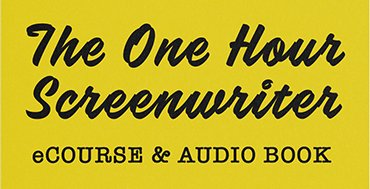The Role of Persistence and Respect in Filmmaking


I did really like what the producer, Darlow Smithson, had to say about getting the film made. Note particularly the last line. That is a keeper re: how to adapt true stories intelligently.
Persuading Ralston to sell Smithson the rights to his against-the-odds tale was time consuming. “Not long after it happened, the story of Aron’s accident went around the world. Like everyone else, I emailed him,” recalls Smithson.With his gleaming bald head and cultivated English voice, the producer resembles a character actor forever cast as one of those charming British baddies in crime capers.Smithson says the climber received “a thousand approaches” from would-be filmmakers. He had given up on the project when “out of the blue” Ralston contacted him six years ago.Smithson’s entre was, perhaps inevitably, the iconic “Touching the Void.” “What changed everything was that he saw and loved the film,” he says.Even so, tying down the rights to Ralston’s story took patience. “Lots of big Hollywood players wanted them too. We had to pay a lot of money (he declines to be specific), but I don’t think it was the money that persuaded Aron to go with us. He could have got more elsewhere, but he trusted us to handle the story with sensitivity. People like Aron live with what happened to them every single day of their lives, and letting go of that story is very difficult.”Originally the climber rejected Boyle’s approach, but in 2009, they reached an agreement.“It was a challenge to get Aron to go with Danny’s creative vision,” Smithson acknowledges. “He told him, ‘You’ve got to lend me your story; I will tell it and then hand it back to you.’ “http://www.variety.com/article/VR1118032891/Persuading Ralston to sell Smithson the rights to his against-the-odds tale was time consuming. “Not long after it happened, the story of Aron’s accident went around the world. Like everyone else, I emailed him,” recalls Smithson.
With his gleaming bald head and cultivated English voice, the producer resembles a character actor forever cast as one of those charming British baddies in crime capers.
Smithson says the climber received “a thousand approaches” from would-be filmmakers. He had given up on the project when “out of the blue” Ralston contacted him six years ago.
Smithson’s entre was, perhaps inevitably, the iconic “Touching the Void.” “What changed everything was that he saw and loved the film,” he says.
Even so, tying down the rights to Ralston’s story took patience. “Lots of big Hollywood players wanted them too. We had to pay a lot of money (he declines to be specific), but I don’t think it was the money that persuaded Aron to go with us. He could have got more elsewhere, but he trusted us to handle the story with sensitivity. People like Aron live with what happened to them every single day of their lives, and letting go of that story is very difficult.”
Originally the climber rejected Boyle’s approach, but in 2009, they reached an agreement.
“It was a challenge to get Aron to go with Danny’s creative vision,” Smithson acknowledges. “He told him, ‘You’ve got to lend me your story; I will tell it and then hand it back to you.’ “
Full story here: http://www.variety.com/article/VR1118032891/



Create a visual map for a character’s emotional journey. Pull stories from character rather from rote story structure beats. Some of the largest international media companies, use this in story and character development.


A clear concise guide for writers and producers to have by their side as they embark on a project. It gives a really vital reminder of what is key for story success.

No comment yet, add your voice below!